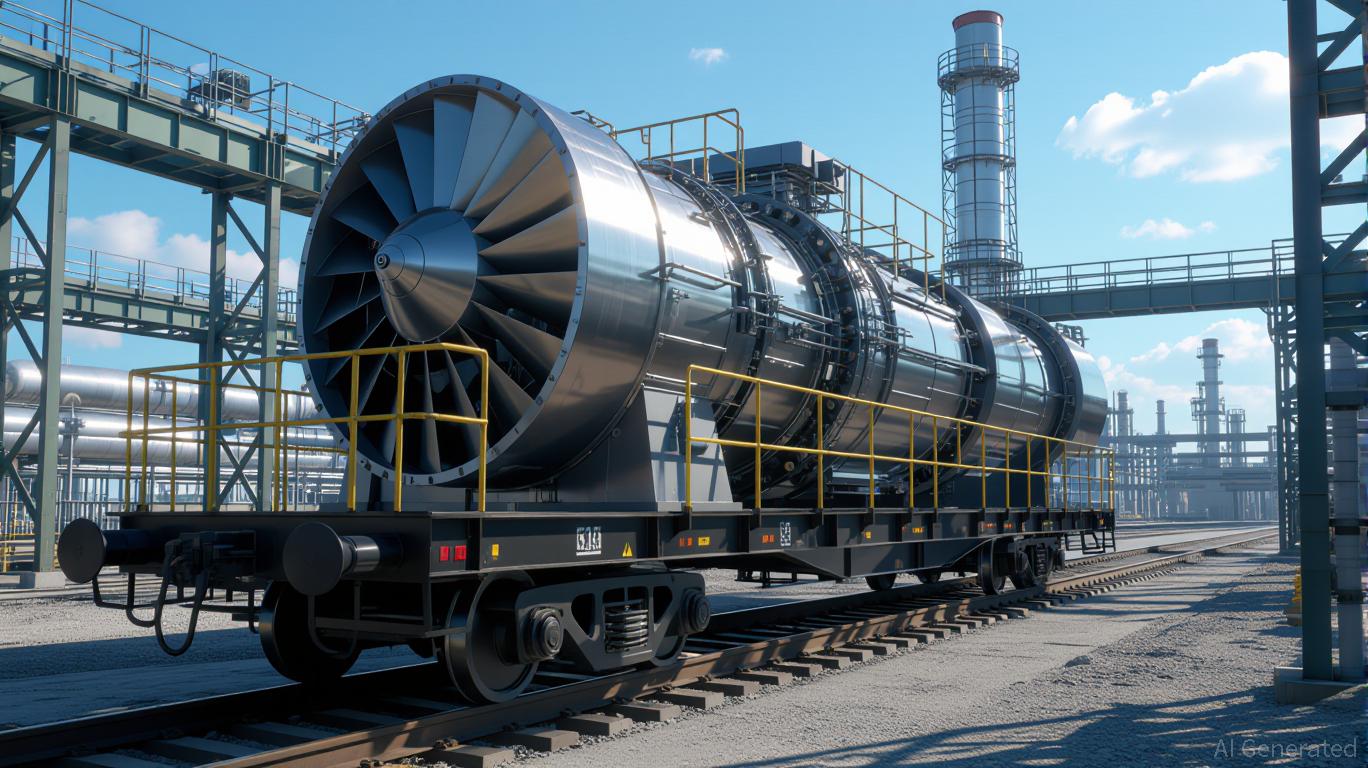
The energy transition is no longer a distant promise but an unfolding reality. As the world grapples with the dual imperatives of decarbonization and energy security, utility companies like Georgia Power are navigating a complex landscape. Their recent modernization of Plant Yates, a cornerstone of Georgia’s energy grid, offers a compelling case study in how natural gas is being repositioned as a bridge fuel. This analysis explores the strategic logic behind Georgia Power’s investments, the evolving role of natural gas in a decarbonizing world, and the investment implications for stakeholders.
Plant Yates: A Model of Adaptive Infrastructure
Georgia Power’s $1.3 billion modernization of Plant Yates, approved under its 2025 Integrated Resource Plan (IRP), is emblematic of a broader shift. The project involves installing three state-of-the-art M501JAC gas turbines, each capable of generating 433 megawatts (MW) of power. These turbines, delivered via rail and truck, are air-cooled, enabling faster startup times (30 minutes) and operational flexibility. Crucially, they can run on oil in emergencies and are designed to transition to hydrogen blends in the future—a nod to long-term decarbonization goals.
The project’s timing is strategic. With Georgia’s electricity demand projected to grow by 8,500 MW over six years—driven by data centers, EV manufacturing, and industrial expansion—reliability is paramount. The turbines will add 1,300 MW of capacity by 2027, ensuring grid stability while leveraging existing infrastructure. This approach minimizes capital intensity, as the plant’s existing footprint is repurposed rather than replaced.
Natural Gas as a Transitional Asset
Natural gas has long been criticized for its methane emissions and perceived role in locking in fossil fuel dependence. Yet, in Georgia’s context, it is being framed as a pragmatic bridge. The 2025 IRP allocates 58% of new capacity to gas-fired generation, including upgrades to Plant McIntosh and extended operations for coal plants through 2034. This strategy balances immediate reliability needs with long-term sustainability.
The economic rationale is clear: gas remains cheaper than alternatives like hydrogen or advanced nuclear. For data centers, which require 24/7 power, gas provides a cost-effective backup to intermittent renewables. Moreover, Georgia’s proximity to domestic gas supplies and the Inflation Reduction Act’s (IRA) incentives for domestic manufacturing reduce exposure to global price volatility.
However, risks persist. Methane leakage, regulatory shifts, and the rapid decline in battery storage costs could render gas assets stranded. Georgia Power’s quarterly load updates and 2027 IRP revision mechanism aim to mitigate this by allowing pivots toward cheaper storage solutions if conditions change.
Investment Implications: Balancing Flexibility and Exposure
For investors, Georgia Power’s strategy presents a nuanced opportunity. The utility’s gas investments are not static but adaptive, with clear pathways to decarbonization. Hydrogen blending trials at Plant McIntosh and modular turbine designs that accommodate future retrofits exemplify this flexibility.
Yet, the gas-heavy IRP also introduces exposure to fossil fuel volatility. The Southern Environmental Law Center and others have raised concerns about whether Georgia’s approach aligns with national decarbonization targets. Investors must weigh these risks against the utility’s strong regulatory backing and its role in supporting Georgia’s economic growth.
A diversified approach is advisable. While gas infrastructure offers near-term returns, pairing it with IRA-fueled battery storage projects—such as Georgia Power’s 1,500 MW BESS target by 2030—creates a hedge against stranded assets. Companies like LG Energy Solution and SK On, which are expanding battery manufacturing in the Southeast, stand to benefit from this transition.
The Path Forward: Strategic Hedging in a Shifting Landscape
Georgia Power’s modernization of Plant Yates underscores a broader trend: utilities are redefining their roles as both energy providers and infrastructure innovators. The success of natural gas as a bridge fuel will depend on three factors:
1. Technological Advancements: The pace of battery cost declines and hydrogen integration will determine gas’s longevity.
2. Regulatory Dynamics: The Georgia PSC’s oversight ensures adaptability but introduces uncertainty. Investors must monitor quarterly load reports and policy shifts.
3. Market Forces: Industrial demand, particularly from data centers, will dictate the scale of gas’s role.
For now, Georgia Power’s hybrid strategy—combining gas, renewables, and storage—offers a blueprint for managing the energy transition. Its ability to pivot in response to technological and regulatory changes will be critical.
Conclusion: A Pragmatic Path to Decarbonization
The energy transition is not a binary choice between fossil fuels and renewables but a mosaic of trade-offs. Georgia Power’s Plant Yates project exemplifies this complexity. By treating natural gas as a transitional asset with clear decarbonization pathways, the utility balances immediate reliability with long-term sustainability.
For investors, the lesson is clear: prioritize projects with flexibility, regulatory alignment, and IRA incentives. Georgia Power’s modernization is not just about power generation—it’s about building infrastructure that can evolve with the times. In a world where certainty is elusive, adaptability is the ultimate asset.
